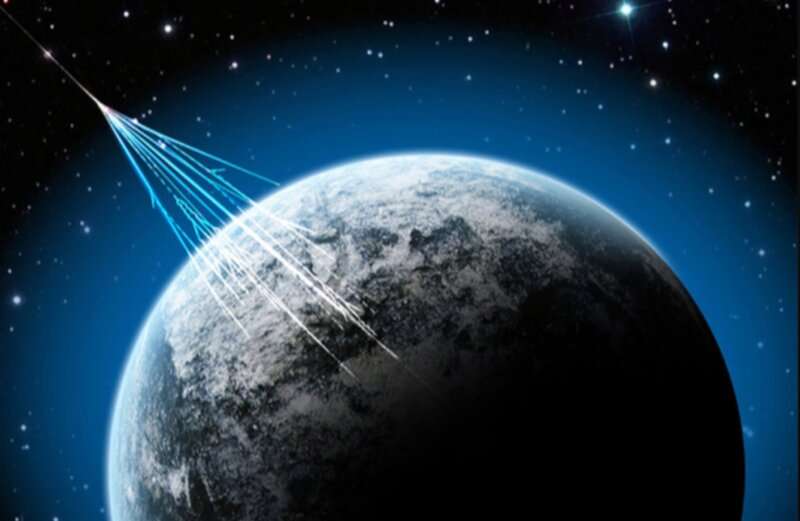December 1, 2020 report
A possible way to measure ancient rate of cosmic ray strikes using 'paleo-detectors'

An international team of researchers has proposed a way to indirectly measure the rate of cosmic rays striking the Earth over millions of years. In their paper published in the journal Physical Review Letters, they suggest using the imprints made by atmospheric neutrinos in so-called "paleo-detectors"—natural minerals expressing damage tracks resulting from nuclear recoils.
Every moment of every day, the Earth is bombarded by cosmic rays—most of them are light nuclei and protons. And as those cosmic rays pass through the atmosphere, some of them collide with atoms, smashing them apart and resulting in the production of neutrinos, which rain down on the planet. Astrophysicists have noted that a method to study the history of this bombardment could reveal more about the sources of cosmic rays. In this new effort, the researchers suggest that rocks hidden deep beneath the Earth's surface may hold just such a record.
Prior research has shown that when neutrinos are produced in the atmosphere, they can pass all the way through the Earth and head out into space. But for some, the journey ends when they collide with atoms inside of rock deep below the Earth's surface. This creates a debris path that displaces some of the atoms in the crystal that comprises the rock. Physicists call them nuclear recoils.
The researchers suggest that it should be possible to extract some of this rock and to study the nuclear recoils to learn more about the history of cosmic rays striking the planet. To find out if that might be possible, the team has been conducting experiments to estimate the likelihood of finding nuclear recoils in various kinds of rock. The experiments resulted in the construction of computer simulations. And the simulations have shown that the estimated length of some of the nuclear recoils should be in the range of 2-20 or 50-100 micrometers long—ranges that would be distinguishable from other background sources. The researchers suggest that nuclear recoil found in deep rock samples could provide a record of cosmic ray strikes going back 1 billion years. Getting those samples, they note, would require some effort—traditional bore holes would expose the samples to strikes that are happening today, so they would have to be shielded somehow.
More information: Johnathon R. Jordan et al. Measuring Changes in the Atmospheric Neutrino Rate over Gigayear Timescales, Physical Review Letters (2020). DOI: 10.1103/PhysRevLett.125.231802
U-M press release: sciencex.com/wire-news/3682796 … rust-to-measure.html
Journal information: Physical Review Letters
© 2020 Science X Network





















